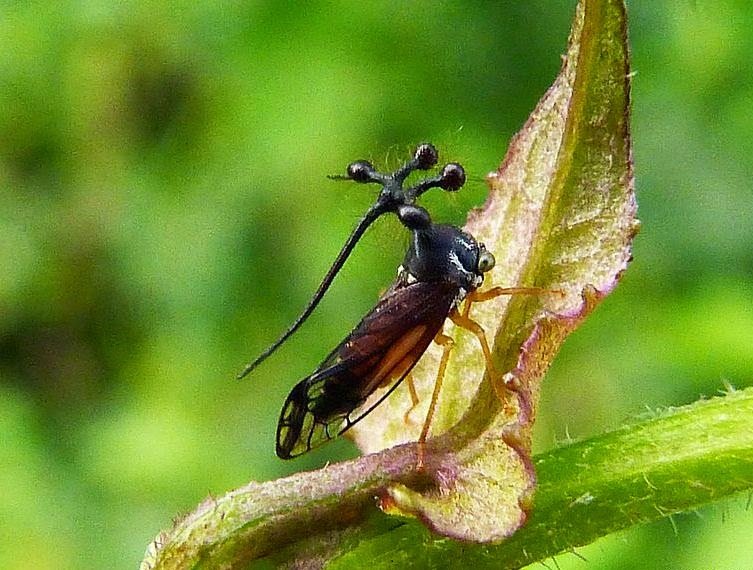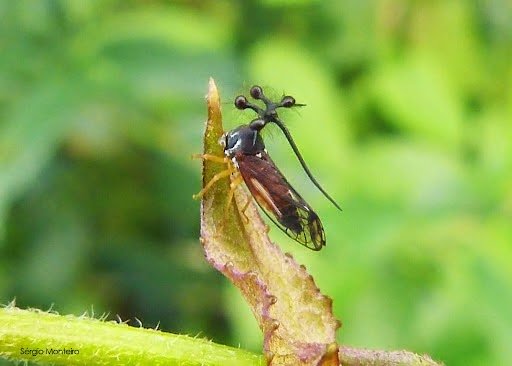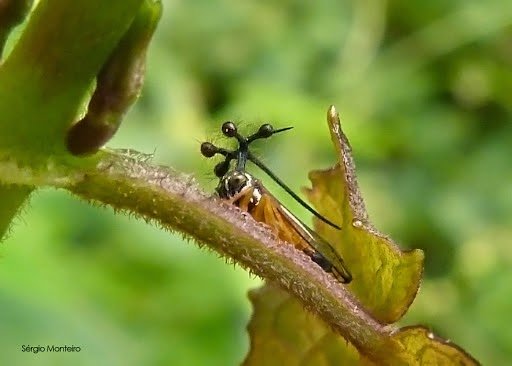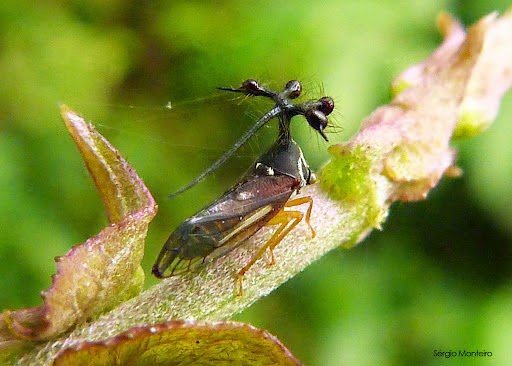Today's strange animal is an insect. A pretty weird one that is, one that looks like a hybrid between a helicopter and an alien spaceship or something! So, let me introduce you to...
The Brazilian treehopper

Scientifically described as Bocydium globulare, the brazilian treehopper is definitely one of the weirdest insects you are likely to encounter. Just look at that head gear! It's pure awesomeness! If you want to see one from up close you must take a trip to the forests of the northern half of South America. Two other common names it comes by are "The Ball Bearer" and just "Globulare".
Now, let's learn more about this little guy!
What's with the weird head gear?
The first time I saw photos of this insect I imagined the round structures to be eyes or something. Disappointingly, they are just spheres made of chitin. Their purpose? Nobody knows! Unfortunately, there is not much research on the insect and we don't really know much about it.
A good theory could be that it's some sort of sexual characteristic used by males to attract females. But females have the exact same appendages so... there goes the theory.
In a paper featured on Nature [1], Professor Martin Hemp writes that "the hollow globes, like the remarkable excrescences exhibited by other treehoppers, probably deter predators." I guess this makes sense. Just imagine eating this thing! These appendages look quite a pain to chew.
Another theory is that the weird structure may serve as decoy, mimicking a fake head from the front. With a bit of luck, a predator might go for the structure instead of the real head and the insect gets a second chance in life.
And here's my theory! Something that I want to point out is that the head-structure reminds me of the fruiting bodies produced by ants infected and killed by the Ophiocordyceps unilateralis fungi, an organism that I plan to cover in a future post. Perhaps a mimicry anti-predator adaptation? What do you think about that?
But as aforementioned, all these are just theories. We need more research to get actual answers. And I doubt any fund for such research is coming out anytime soon so we will probably wait a while. Any rich guys out there? :)
Since the species is not well studied, the information is scarce. Below is all the information I could gather for anyone who wants to learn more about it. Feel free to comment if you have anything to add! I would love to include it and of course give you credit.

Description & Behavior
B. globulare is a solitary species. Adults are about 5 cm (2 inches long) and are most often found feeding on the undersides of Glory Bush leaves (Miconia spp.), just a couple of meters above the surface. The species is attracted to lights.

Scientific Classification
Kingdom: Animalia
Phylum: Arthropoda
Class: Insecta
Order: Hemiptera
Family: Membracidae
Genus: Bocydium
Species: Bocydium globulare

Photo Credit
All photos in this article are the intellectual property of Sérgio Monteiro. Don't reuse them without contacting him first.
References
- http://www.nature.com/nature/journal/v468/n7323/full/468506a.html?foxtrotcallback=true
- http://www.americaninsects.net/h/bocydium-globulare.html
- http://www.strangeanimals.info/2014/12/the-helicopter-like-bocydium-globulare.html
SteemSTEM
Please consider supporting the @steemstem project. SteemSTEM is a community driven project which seeks to promote well written/informative Science Technology Engineering and Mathematics postings on Steemit. Click here to join the chat and learn more! The steemstem project is run by @justtryme90, @lemouth and some other cool guys & gals :)
More Strange Animals To Come
I will be posting one new strange animal every day so if you enjoyed this post make sure to follow me and let's discover together some of the world's most strange and bizarre creatures! An upvote and resteem would be nice too :P In the meantime, you may want to check the Red Lipped Batfish and learn why the Naked Mole Rat is the world's strangest mammal!
